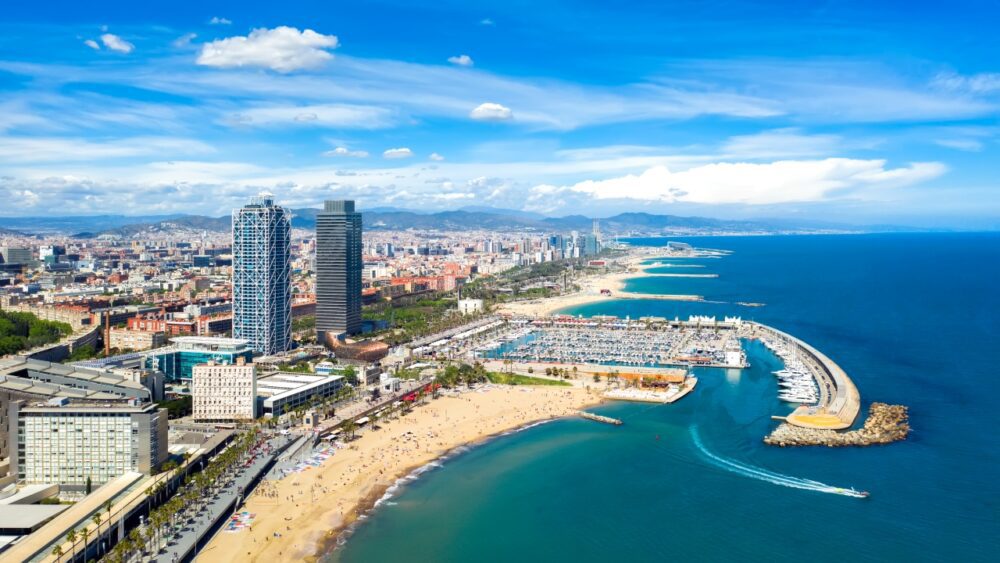
Introduction
Spain is a country that seems to have everything—a rich cultural history, vibrant cities, stunning coastlines, and some of the most diverse landscapes in Europe. From the art-filled streets of Madrid and Barcelona to the sun-soaked beaches of Ibiza and Majorca, Spain offers an incredible variety of experiences. Whether you’re a history buff, a foodie, an art lover, or simply someone who enjoys soaking up the sun, Spain will leave you enchanted. It’s a country where the pace of life slows down, and where you’re encouraged to enjoy every moment, whether that’s through a leisurely meal of tapas or a sunset stroll along the Mediterranean coast.
The first time I visited Spain, I was struck by how effortlessly it blends the old with the new. I could spend my morning exploring ancient Moorish palaces, my afternoon wandering through world-class art galleries, and my evening sipping sangria in a buzzing plaza. Every city has its own unique vibe, and every region has its own customs and traditions. Spain is a country that keeps surprising you, no matter how many times you visit.
Table of Contents
Reasons You Should Visit Spain
1. Incredible Art and Architecture
Spain is a treasure trove of art and architecture. The works of Gaudí in Barcelona, including the iconic Sagrada Familia and the whimsical Park Güell, are some of the most distinctive buildings in the world. I remember standing in awe under the colourful mosaics of Park Güell, marvelling at how one man’s vision could create such beauty in stone and tile.
Madrid is home to the Prado Museum, one of the finest art museums in Europe, where you can see masterpieces by Velázquez, Goya, and El Greco. Nearby, the Reina Sofía museum is where you’ll find Picasso’s Guernica, an emotional and haunting piece that captures the horror of war. Spain’s architecture is equally impressive, from Seville’s Moorish-inspired Alcázar to Granada’s Alhambra, a palace-fortress that looks like something out of a fairy tale.
2. World-Class Food and Wine
Food in Spain is a celebration of life itself. Whether you’re enjoying tapas in a cosy bar in Seville or sampling fresh seafood in Valencia, Spain’s culinary scene is second to none. One of my favourite experiences was hopping from bar to bar in Madrid, trying different tapas—patatas bravas, jamón ibérico, and gambas al ajillo—each paired with a glass of local wine.
Spain is also home to paella, and no place does it better than Valencia, where this iconic rice dish was born. Sitting by the beach with a plate of paella and a glass of chilled sangria is an experience that captures the essence of Spanish dining—relaxed, communal, and full of flavour. Spain’s wine regions, like La Rioja and Priorat, produce some of the world’s best wines, and visiting a vineyard for a tasting is a must if you love a good Tempranillo or Garnacha.
3. Beaches and Islands for Every Taste
Spain is blessed with some of the most beautiful beaches in Europe, and with its long coastline and numerous islands, there’s a spot for every kind of traveller. Ibiza and Majorca are famous for their stunning beaches and vibrant nightlife, but they also offer quieter spots where you can escape the crowds and enjoy the crystal-clear waters. I spent a blissful afternoon in Cala d’Hort, a secluded cove on Ibiza, watching the sunset over the Mediterranean.
On the mainland, Costa del Sol is a haven for beach lovers, with its golden sands and lively resorts. In Malaga, you can enjoy both beach time and culture, with the city’s art galleries and historical sites just steps away from the sea. For something a bit more rugged and wild, head to the northern coast and explore the beaches around Bilbao, where the Atlantic Ocean crashes against dramatic cliffs.
4. A Deep Sense of History
Few countries in Europe can rival Spain’s deep and diverse history. From Roman ruins to Moorish palaces to grand Gothic cathedrals, Spain’s past is visible at every turn. Walking through the ancient streets of Granada, with the Alhambra perched above, I felt transported to another era. The intricate Islamic architecture, the gardens, and the views over the city make it one of the most magical places I’ve ever visited.
Spain’s history of conquest and reconquest is most evident in Seville, where the Giralda Tower and Seville Cathedral stand as symbols of both Moorish and Christian power. In Toledo, just a short train ride from Madrid, you can explore a city where Jewish, Muslim, and Christian cultures coexisted for centuries. Each of Spain’s regions tells a different part of the story, making it a fascinating country to explore if you’re a history enthusiast.
5. Festivals and Flamenco
Spain is a country that loves to celebrate, and its festivals are legendary. Whether it’s the Running of the Bulls in Pamplona, the Tomatina in Buñol, or the Semana Santa processions in Seville, you’ll find that Spain knows how to throw a party. I was lucky enough to experience Las Fallas in Valencia, a festival where giant papier-mâché figures are paraded through the streets and then set alight in a spectacular finale. The energy and passion of the people during the festival were infectious.
And then, of course, there’s flamenco. Watching a flamenco performance in a small, intimate venue in Seville was one of the most moving experiences of my trip. The intensity of the music, the rhythm of the dance, and the emotion of the singer all come together to create something truly special. Flamenco is more than just a dance—it’s a reflection of the soul of Spain, and seeing it live is a must for any visitor.
Best Places to Visit in Spain
1. Madrid
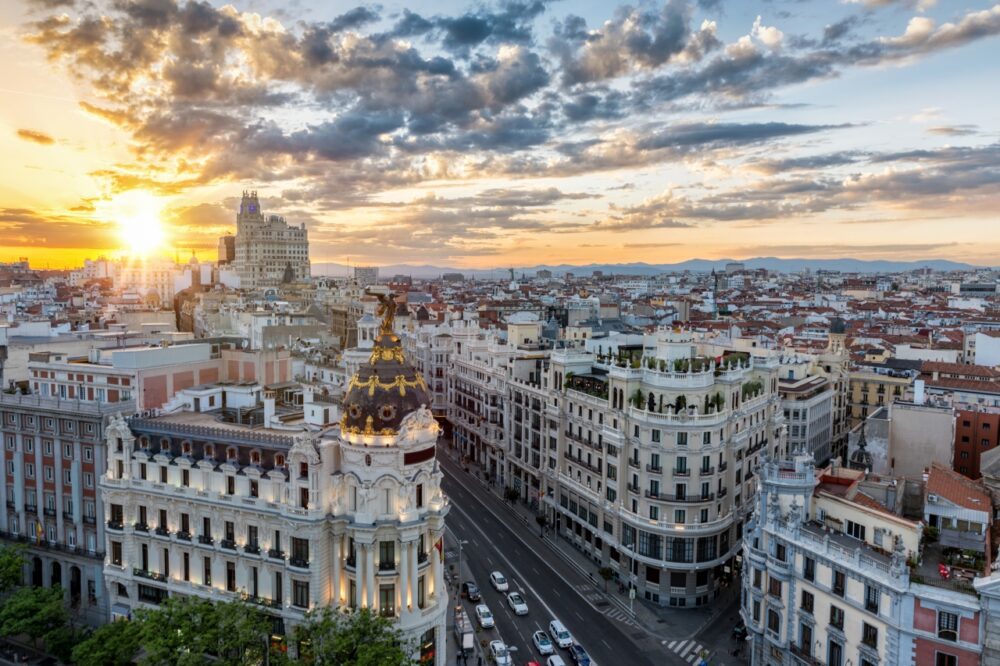
Spain’s capital, Madrid, is a city that combines grand boulevards, royal palaces, and world-class museums with a laid-back vibe that makes you feel right at home. I loved spending my mornings wandering through Retiro Park, stopping by the Crystal Palace, and my afternoons exploring the Prado Museum and the Royal Palace. The nightlife in Madrid is also fantastic, whether you’re sipping cocktails in Chueca or catching a live show in Malasaña.
For art lovers, Museo Reina Sofía is a must-see, home to Picasso’s famous Guernica. And when it comes to food, you can’t beat the Mercado de San Miguel for tapas, where you can try everything from fresh oysters to jamón ibérico. Madrid’s energy is infectious, and it’s a city that keeps you coming back for more.
2. Barcelona

Barcelona is one of those cities that leaves a lasting impression. From the moment I laid eyes on La Sagrada Familia, I was mesmerised. Gaudí’s masterpiece is unlike any other cathedral I’ve ever seen, with its soaring spires and intricate details that seem to defy logic. The Gothic Quarter is equally enchanting, with its narrow, winding streets and hidden plazas.
For a more relaxed vibe, I loved heading down to Barceloneta Beach, where locals and tourists alike gather to swim, sunbathe, and enjoy the seaside atmosphere. And no trip to Barcelona is complete without a visit to Park Güell, where Gaudí’s playful architecture blends seamlessly with nature. Barcelona is a city that effortlessly combines culture, history, and beach life.
3. Seville

Seville is the beating heart of Andalusia, a city where history, culture, and tradition come alive. I spent days wandering through the Alcázar, marvelling at its intricate Moorish architecture and beautiful gardens. The Seville Cathedral is another must-visit, home to the tomb of Christopher Columbus and the towering Giralda bell tower, which offers stunning views over the city.
But Seville isn’t just about history—it’s also the birthplace of flamenco. I went to a flamenco show in the Triana neighbourhood, and the passion and intensity of the performance were unforgettable. Seville is a city of festivals and traditions, and if you visit during Semana Santa or Feria de Abril, you’ll witness the city at its most vibrant.
4. Valencia
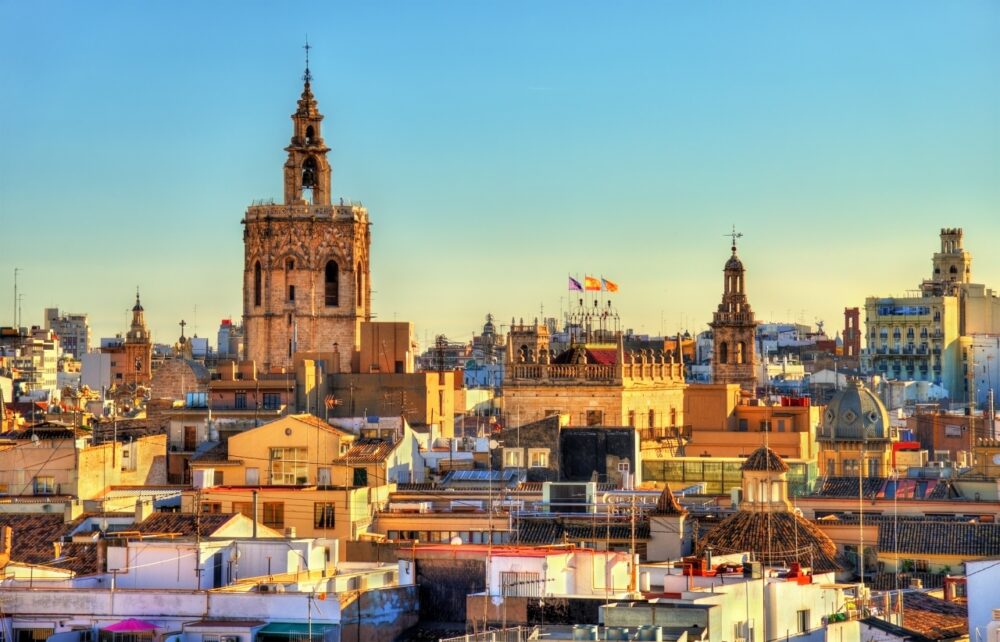
Valencia is a city that often gets overshadowed by Madrid and Barcelona, but it’s a destination that has so much to offer. Known as the birthplace of paella, Valencia is a haven for foodies. I spent a blissful afternoon on Malvarrosa Beach, enjoying a fresh seafood paella while watching the waves roll in.
The futuristic City of Arts and Sciences is a striking contrast to the city’s historic old town, with its ultra-modern architecture and cutting-edge museums. Valencia is also famous for its Las Fallas festival, where enormous sculptures are paraded through the streets and then burned in a dramatic final night. Valencia is a perfect mix of old and new, beach and city, making it one of Spain’s most unique destinations.
5. Granada
Granada is home to one of Spain’s most iconic landmarks—the Alhambra. This stunning Moorish palace, set against the backdrop of the Sierra Nevada mountains, is like something out of a dream. I spent an entire day exploring the Alcazaba, Generalife Gardens, and the Palacios Nazaríes, each more beautiful than the last.
The city itself has a bohemian vibe, with narrow streets lined with tapas bars, and the Albaicín district offers some of the best views of the Alhambra, especially at sunset. Granada also has a rich history of religious coexistence, and visiting the Royal Chapel, where Isabella and Ferdinand are buried, is a fascinating glimpse into Spain’s past.
6. Bilbao
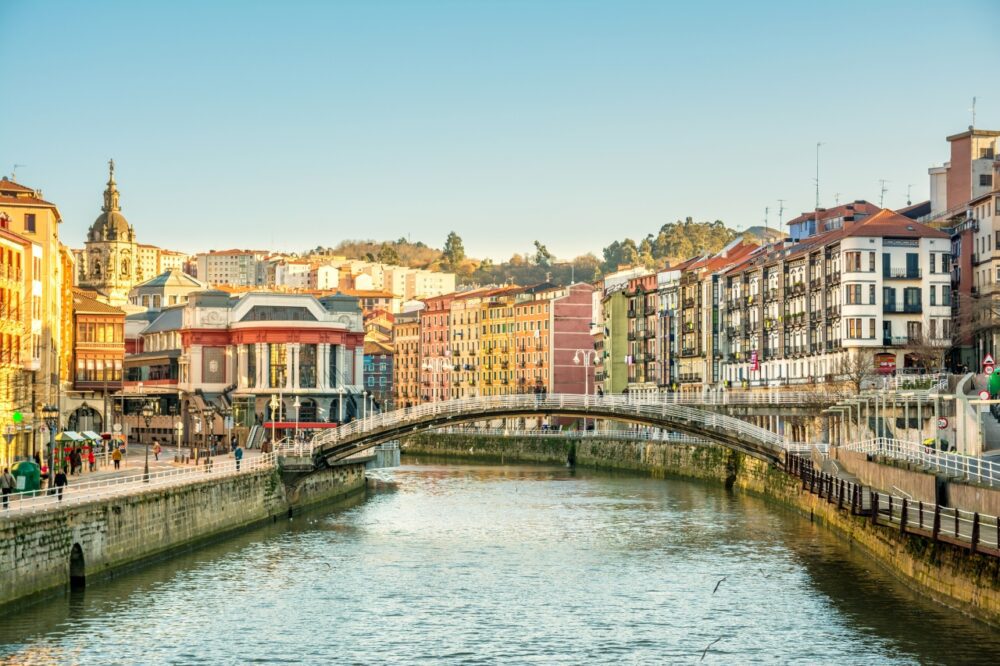
Nestled in the Basque Country, Bilbao is a city that has reinvented itself from an industrial hub to a centre of culture and art. The Guggenheim Museum is a must-see, with its futuristic design and impressive collection of contemporary art. I spent hours wandering through its halls, and even if you’re not an art lover, the building itself is a work of art.
Bilbao’s old town, or Casco Viejo, is full of narrow streets, bustling markets, and traditional Basque pintxo bars. Pintxos, the Basque version of tapas, are an absolute must-try, and hopping from bar to bar in the evening is one of the best ways to experience the city’s culinary scene. Bilbao’s blend of modern art and traditional culture makes it a unique destination in Spain.
7. Malaga
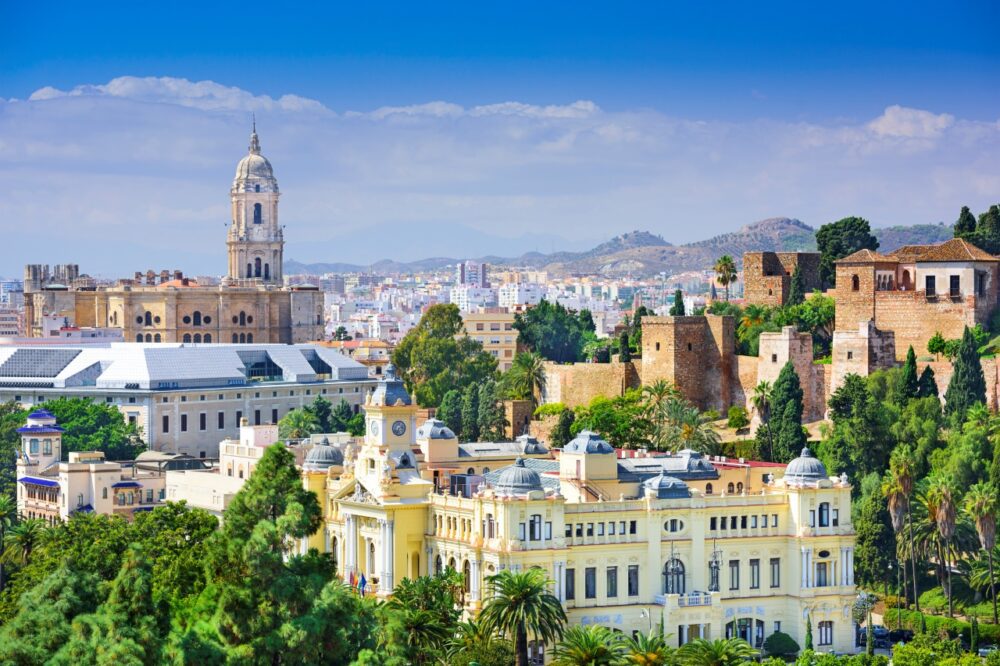
Malaga is often seen as the gateway to the Costa del Sol, but this vibrant city deserves more than just a passing glance. The city’s beaches, like La Malagueta, are perfect for soaking up the sun, but there’s plenty more to discover. I loved exploring the Picasso Museum, which showcases the work of one of Malaga’s most famous sons, and the Alcazaba, a Moorish fortress that offers stunning views over the harbour.
Malaga’s old town is full of lively squares, traditional tapas bars, and beautiful churches, like the impressive Cathedral of Malaga. For a bit of culture mixed with beach time, Malaga is the perfect destination.
8. Alicante
Alicante, located on Spain’s eastern coast, is known for its sunny beaches and laid-back atmosphere. Postiguet Beach is right in the heart of the city, making it easy to combine a day of sightseeing with some time by the sea. The highlight of my visit was hiking up to Santa Bárbara Castle, which offers panoramic views over the city and the Mediterranean.
Alicante’s old town, known as El Barrio, is a maze of narrow streets and colourful buildings. In the evenings, it comes alive with bars and restaurants, making it a great place to enjoy some local food and wine. Alicante is a city where you can relax, explore, and enjoy the best of Spain’s coastal charm.
9. Ibiza
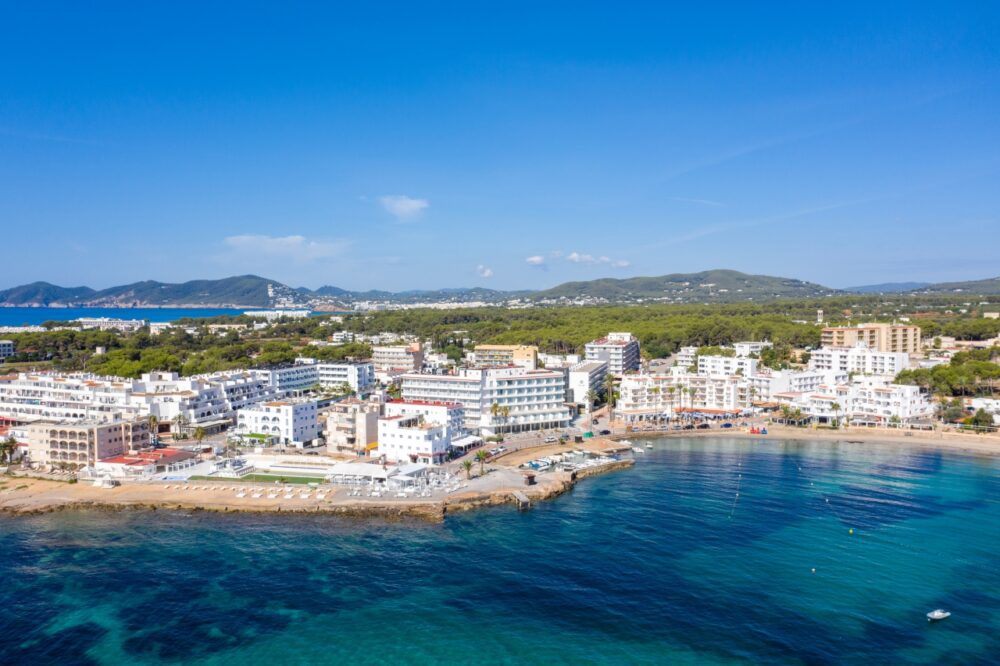
Famous for its nightlife, Ibiza is a party lover’s paradise, but there’s much more to this island than its clubs. Away from the busy resorts, Ibiza has some of the most beautiful beaches in the Mediterranean, like Cala Comte and Cala d’Hort, where you can relax and enjoy the clear, turquoise waters. I spent a quiet morning exploring the island’s old town, Dalt Vila, a UNESCO World Heritage site with stunning views over the harbour.
For a taste of Ibiza’s more tranquil side, head to the north of the island, where small villages and hidden beaches offer a peaceful escape. Whether you’re here for the nightlife or the natural beauty, Ibiza has something for everyone.
10. Mallorca
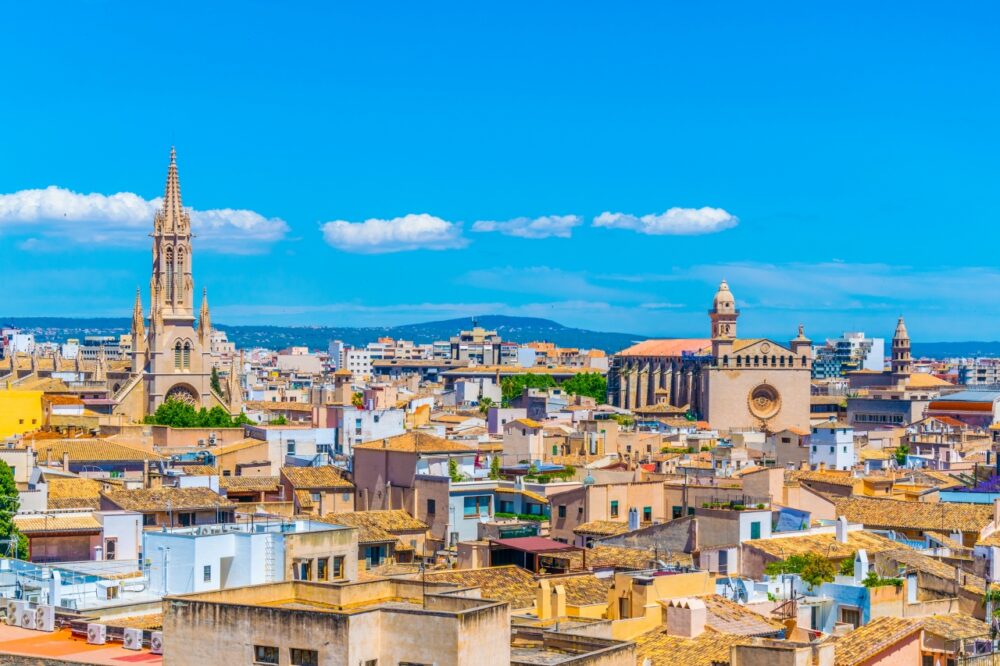
Mallorca is the largest of the Balearic Islands, and it offers a perfect mix of stunning landscapes, beautiful beaches, and vibrant towns. The capital, Palma, is home to the impressive Palma Cathedral, a Gothic masterpiece that dominates the skyline. I loved exploring Palma’s old town, with its narrow streets, lively squares, and historic buildings.
For nature lovers, the Serra de Tramuntana mountain range is perfect for hiking, with its rugged landscapes and breathtaking views. I spent a day driving along the Sa Calobra road, which winds through the mountains to the beautiful Torrent de Pareis gorge. Majorca’s combination of adventure, relaxation, and culture makes it a must-visit destination in Spain.
Travel Tips for Spain
Getting Around Spain
Spain has a great public transport network, with trains and buses connecting most cities and towns. The high-speed AVE trains are the fastest way to travel between major cities like Madrid, Barcelona, and Seville, while regional trains and buses are better for smaller towns. In cities, metro systems in places like Madrid and Barcelona are efficient, and buses are affordable. Renting a car is a good option if you want to explore more remote areas like the Andalucían countryside or the Costa Brava, but driving in busy city centres can be tricky.
Best Time to Visit Spain
The best time to visit Spain depends on where you’re heading. Spring (March to May) and autumn (September to November) offer mild weather, making them ideal for city sightseeing and hiking. If you’re visiting the south, like Andalucía, spring is especially beautiful, with festivals like Semana Santa. Summer (June to August) can be very hot, particularly in inland cities like Madrid, though the coasts are perfect for beachgoers. Winter (December to February) is cooler but ideal for exploring southern Spain and Canary Islands, or skiing in the Sierra Nevada.
Passport and Visa Requirements for Spain
Spain is part of the Schengen Area, so visitors from EU/EEA countries can enter with just an ID card. Travellers from the US, UK, Canada, Australia, and many others can stay visa-free for up to 90 days within the Schengen Zone. Ensure your passport is valid for at least three months beyond your planned departure date. If you’re visiting other Schengen countries, border checks are minimal, but always carry your passport or ID.
Currency and Banks in Spain
Spain uses the Euro (EUR), and ATMs are widely available in cities and towns. Credit and debit cards are accepted almost everywhere, but it’s wise to carry some cash for smaller purchases or in rural areas where card machines might be rare. Tipping in Spain is more relaxed than in other countries—rounding up the bill or leaving 5-10% in restaurants is enough. Avoid exchanging money at airports, as rates can be poor—ATMs or bank exchange offices usually offer better rates.
Language and Useful Phrases to Know
The official language is Spanish, though regional languages like Catalan, Galician, and Basque are also spoken in specific areas. English is widely spoken in tourist areas, but learning a few basic Spanish phrases will go a long way. Try “Hola” (hello), “Gracias” (thank you), and “Por favor” (please). In more rural areas or smaller towns, you may encounter fewer English speakers, so having some Spanish up your sleeve will be helpful.
Budgeting and Costs for Spain
Spain is generally affordable, though prices can vary depending on the region. Big cities like Madrid and Barcelona tend to be more expensive, while smaller towns and rural areas offer better value. For budget-friendly meals, head to local markets or eat at tapas bars, where you can get good food at low prices. Public transport is affordable, and city passes like the Madrid Card can save money on attractions. Booking accommodation in advance can help you find better deals, especially during peak seasons like summer.
Conclusion
Spain is a country that offers something for every kind of traveller. Whether you’re drawn to the rich history of Granada, the modern art of Bilbao, or the beachside vibes of Ibiza, Spain’s diversity is what makes it such a captivating destination. From world-class museums and Moorish palaces to sun-soaked islands and vibrant festivals, Spain invites you to explore its many layers.
What I love most about Spain is how each region has its own distinct culture, cuisine, and traditions. You can visit Seville and experience the fiery passion of flamenco, or head to Barcelona to marvel at Gaudí’s architectural wonders. In Spain, every city, every town, and every village tells its own story, and it’s a country that keeps you coming back for more. So whether you’re a first-time visitor or a seasoned traveller, Spain is a destination that never disappoints.
